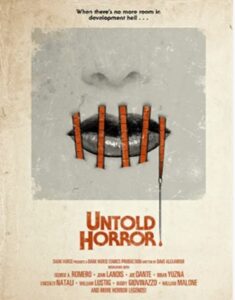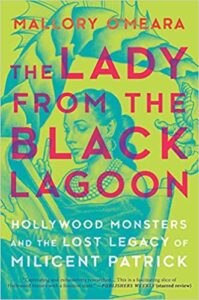Untold Horror by Dave Alexander
Dark Horse Comics, 2021
ISBN-13: 9781506719023
Available: Paperback, Kindle, comiXology ( Bookshop.org )
Untold Horror includes interviews by the former editor-in-chief of Rue Morgue, Dave Alexander, about horror projects that never saw the light of day, with horror legends such as Joe Dante, John Landis, William Lustig, George A. Romero, and more.
Among the discussions in Untold Horror, I found quite a few that were more eye opening than others. An interview with film historian David J. Skal reveals historical information about early drafts of Dracula, Frankenstein, and a few other titles that never came to be. A discussion with Jared Rivet, John Goodwin, and Brandon Wyse regards Tobe Hooper’s vision for a remake of White Zombie. Joe Dante and Matty Simmons at one time wanted to create a National Lampoon version of Jaws. Interviews with William Lustig, Buddy Giovinazzo, and Stephen Romano reveals information on Lustig and Spinell’s Maniac sequels that never came to fruition. Particularly interesting is the revelation that George A. Romero “nearly kick-started the Marvel Cinematic Universe” (p. 67) in the 1980s with a project titled Copperhead. This chapter comes complete with preliminary sketches of characters and storyboards.
There are so many other projects that I could mention, but I think anyone interested in film history should pick up Untold Horror. The book features scripts, sketches, photographs, and other material from unfinished projects. It is heartbreaking to see how many films were never made. Who knows? With the unearthed history, maybe some of these can be resurrected somehow…I can hold out hope anyway. Highly recommended
Reviewed by Lizzy Walker






Follow Us!